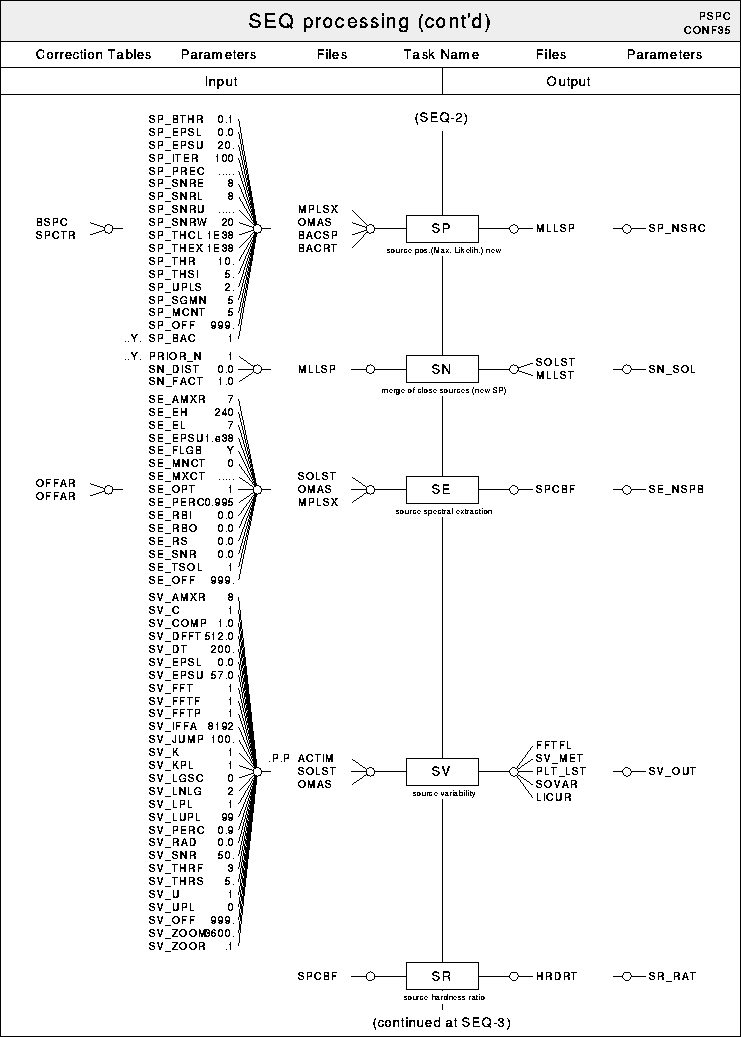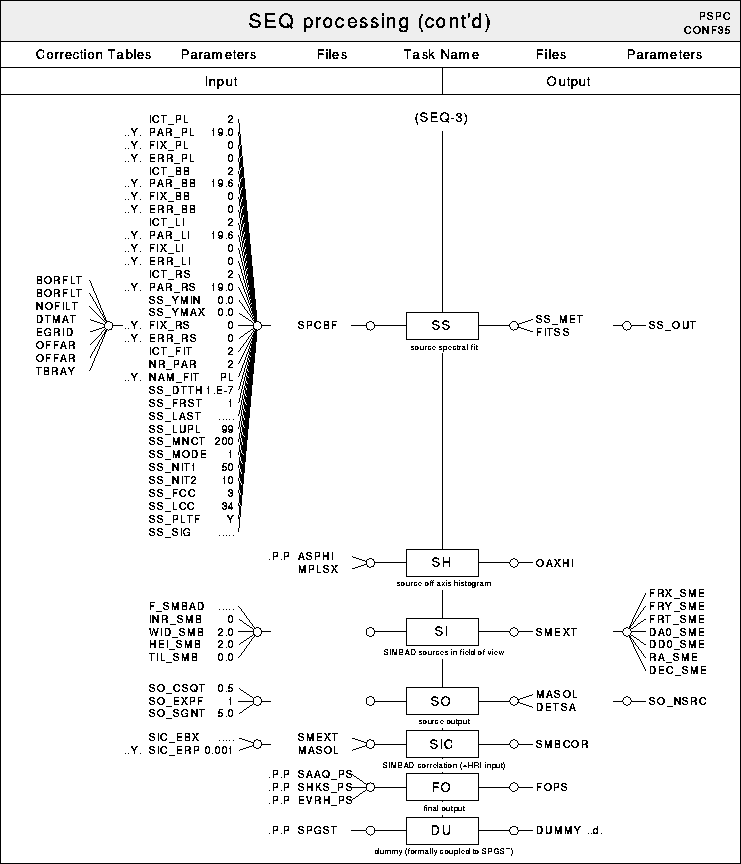




Next: 8.3 Data Set of
Up: 8.2 System Design
Previous: OBI Processing
Finally, the SEQ S/W package generates the output of the
scientific data set.
OBIs, which belong together, will be merged into a single data sequence
to produce a general observation master data set (OMAS).
Accordingly, this data set is used to perform a preliminary
scientific analysis taking into account the corresponding detector
properties of the PSPC and HRI, respectively.
- PSPC processing
- uses different sliding-window detection
algorithms with several detection cell sizes to locate sources in
three energy bands (broad, soft, and hard), and correlates
and merges these into a single source candidate list.
This source list is then compared with the result of a second
source detection method (maximum likelihood),
in order to produce a final source list.
The sources from this list are further analyzed for clustering,
extension, and variability.
A background spectrum is determined and subtracted from the
individual source spectra. Different models are fitted
to these spectra.
- HRI processing
- is restricted to source detection.
Sources are detected using several detection cells sizes.
Multiple identifications of a source with different cell sizes
are noted.
Detected sources are checked for possible time variability.
In both cases a map of appropriate sources from the SIMBAD catalogue
is produced to aid the observer in correlating the X-ray sources
with previous known objects.



If you have problems/suggestions please send mail to
rosat_svc@mpe-garching.mpg.de



